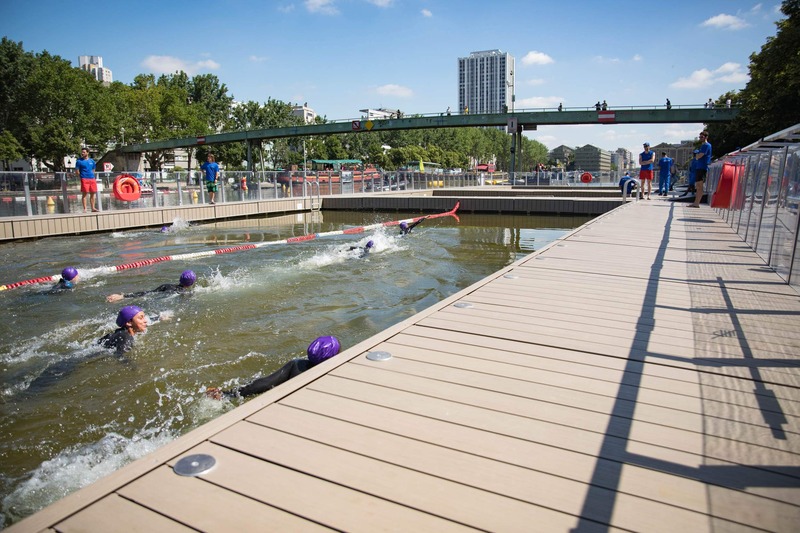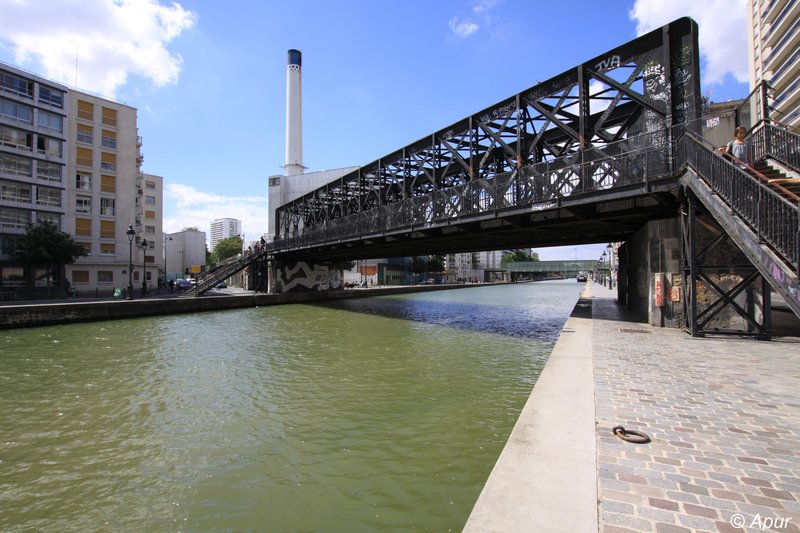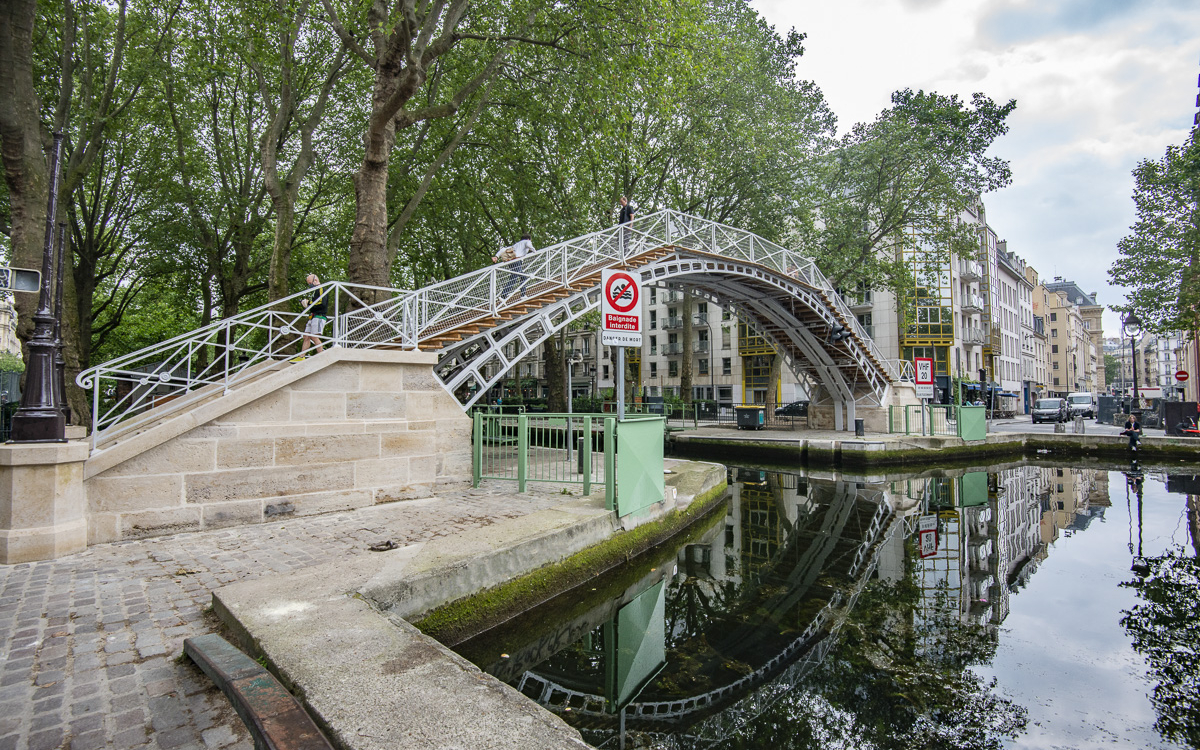Content
Cette page est aussi disponible en français
This article is part of Paris en Seine
In hot weather, it's tempting to take a dip in the Seine and the canals of Paris… Remember that it's strictly forbidden to swim outside authorized bathing areas, as the risks of drowning and accidents are high.
Why is it important to swim in an authorized area?

The Bassin de la Villette bathing area
Crédit photo :
Guillaume Bontemps / Mairie de Paris
The 130 kilometers of the City of Paris river network are not supervised by professionals. Only the bathing areas of the Bassin de la Villette (open from July 5 to August 31, 2025), the Bassin des Récollets (open every Sunday from July 6 to September 7, 2025) and the 3 new bathing areas in the Seine are supervised by lifeguards. Bathing outside these supervised areas means risking your life.
The canals of the City of Paris, like the Seine, are first and foremost a network of waterways used by boats carrying goods (freight) and people (cruises). Numerous boats pass through every day, posing a risk to people who swim outside authorized zones.
What are the dangers of swimming near a boat?
A boat is not a car. Driving a boat is very different from driving a car: boats move slowly, and it's impossible to brake quickly or turn sharply to avoid an obstacle. Swimming in the vicinity of barges is also a definite hazard.
Leisure activities are also developing on the canals, with the possibility of renting small boats without a license. Sometimes piloting a boat for the first time, budding captains are not always in full control of their craft, and may be surprised by the appearance of a bather.
Why shouldn't I jump off a bridge or footbridge?

Canal de l'Ourcq (19th).
Crédit photo :
© Apur
It is strictly forbidden to jump from bridges and footbridges over canals and the Seine. The canals in particular are shallow (around 2 to 3 meters), and there is a high risk of hitting the bottom or an object resting on the bottom.
What are the risks involved in opening the locks?
On the Canal Saint-Martin and the Canal Saint-Denis, the opening of the locks creates a strong water suction current that can drag a man underwater. The lock mechanism cannot be stopped very quickly. Swimming near the locks is therefore extremely dangerous.
Watch out!
Suction can also occur when regulating water levels in a reach between two locks. This operation does not require any lock gates to be opened. A closed lock is not synonymous with safety.
How dangerous are aquatic plants?
On all canals, aquatic vegetation poses a risk to bathers in unauthorized areas. Despite being cut back by the canal department, aquatic plants can wrap themselves around bathers' bodies and trap them at the bottom of the water. This risk is all the greater in that the presence of aquatic plants hinders the intervention of rescue teams.
We want to hear from you!
Was this information useful to you?
Please note: we cannot reply via this form (please do not include any personal information).
